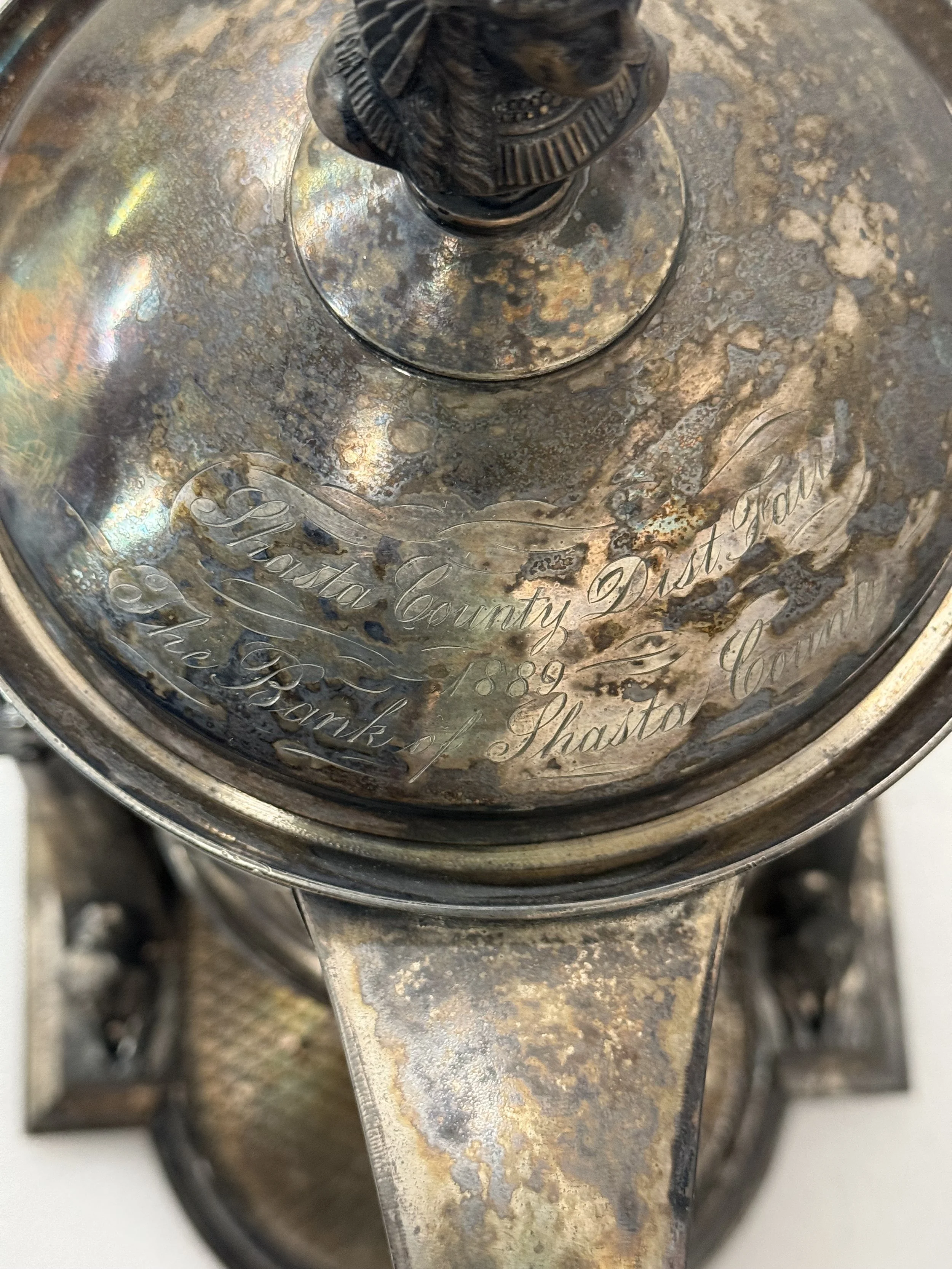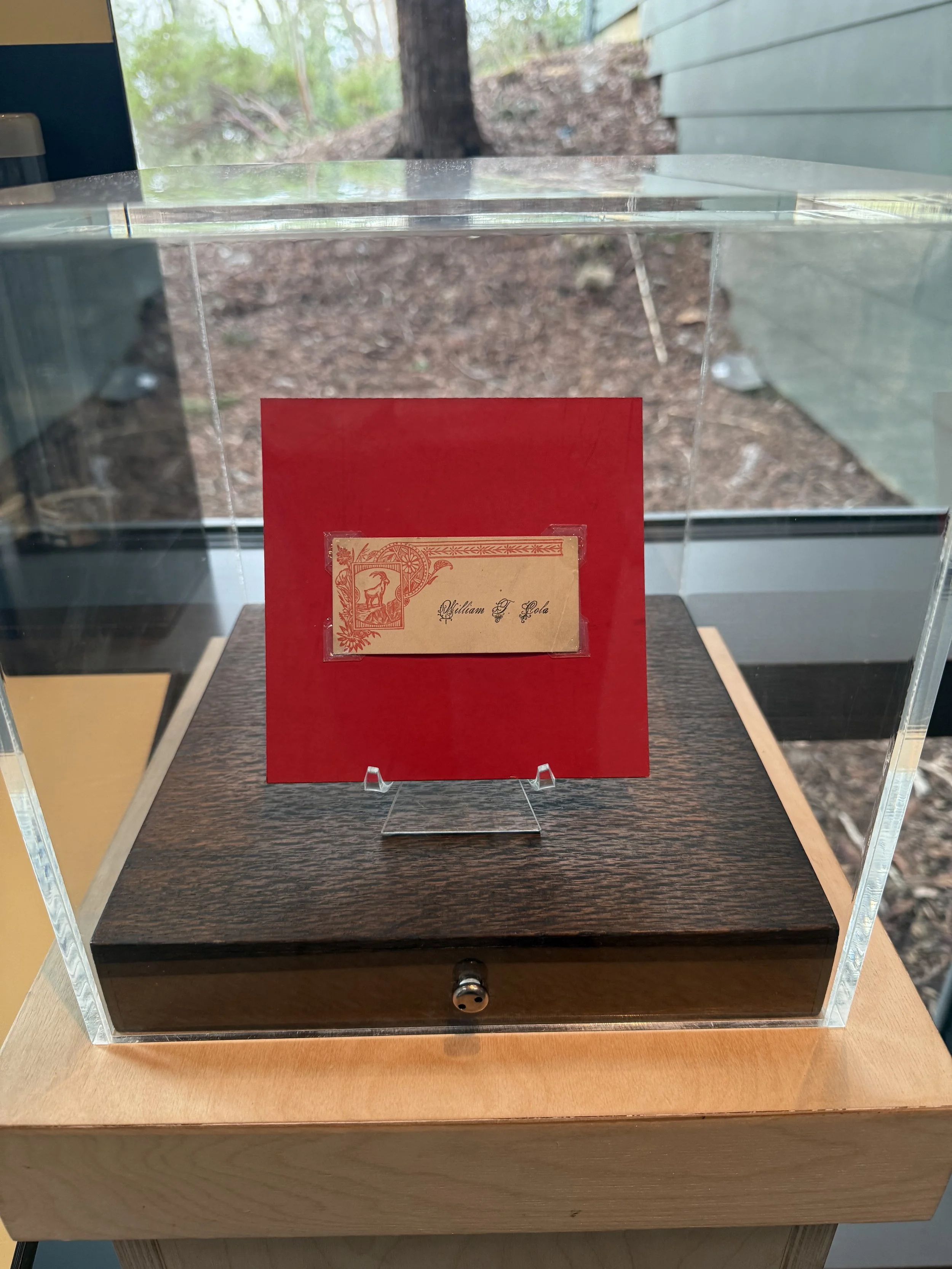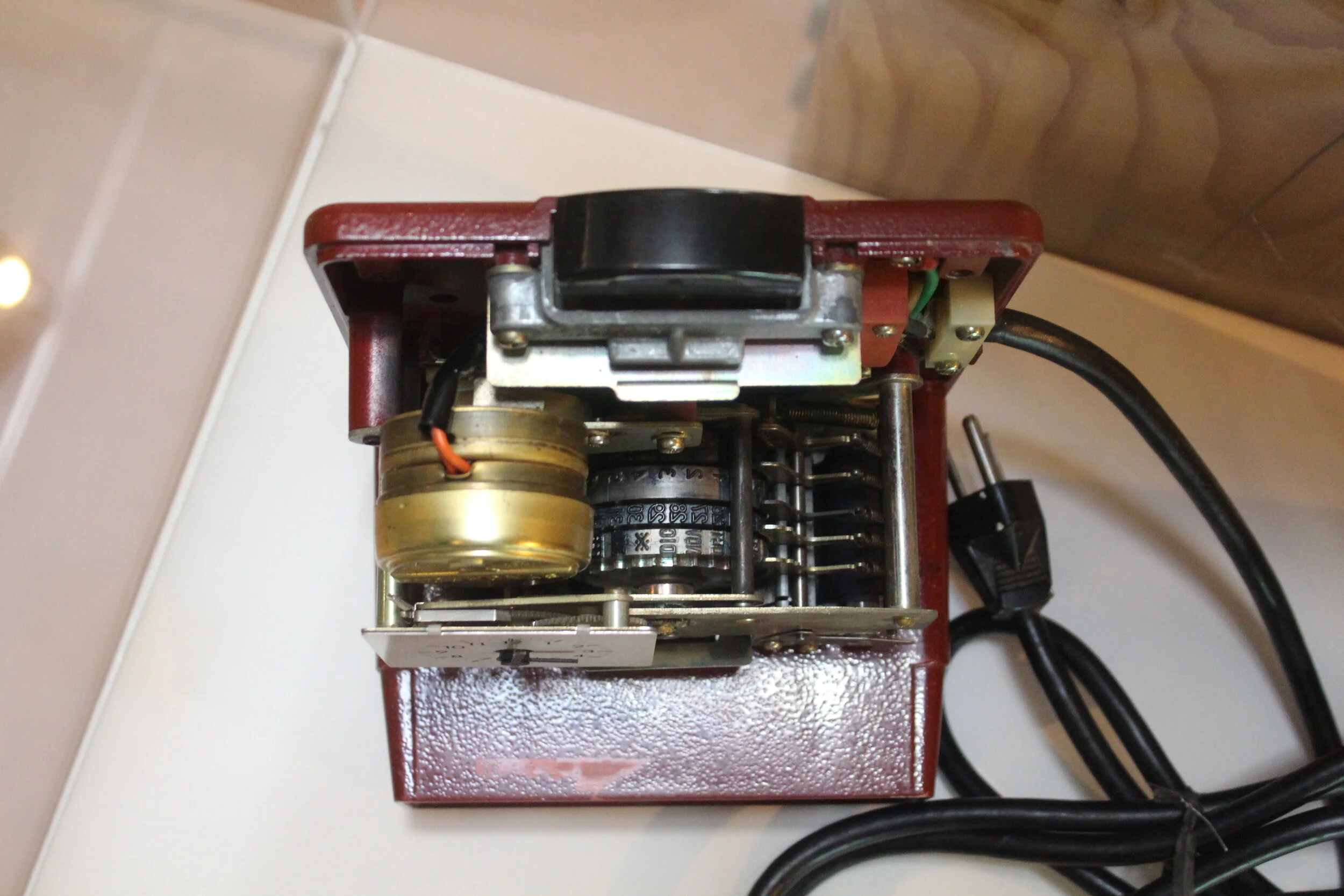September’s Artifact of the Month is an Amano Time Clock, which is not only a beautiful piece of machinery, but also a part of Redding’s history. Built by Amano Time Systems, a Japanese manufacturer in the 1970s, it was used in Redding’s premier upscale department store at the time, Dicker’s.
Artifact of the Month: Haida Argillite Sculpture
Artifact of the Month: Ice Chipper
Artifact of the Month: Historic Remedies
Artifact of the Month: Victorian Pickle Castor
How providential that we are able to present this perfectly pleasing yet peculiar pickle paraphernalia! This is not your ordinary pickle jar! In fact, it probably didn’t hold the type of pickles we are most familiar with today – those delicious, tangy, former cucumbers. Before the ubiquity of refrigeration, jams, jellies, pickles, and chutneys preserved produce for future consumption. Victorian pickle recipes included sweet pickled cantaloupe, pickled onions, cauliflower, cabbage, radish pods, nasturtium seeds, walnuts, as well as the more familiar gherkins and cucumbers. Spiced or pickled fruits such as sour plums, blackberries, cherries, and pears were also popular. Yum!
Artifact of the Month: Powder Horn
You may think this is a horn to blow – a type of trumpet to gather the troops and charge into battle! Though these objects were sometimes used in battle, by local militiamen during the Revolutionary War for example, powder horns served a different purpose. In addition to bullets and the firearms themselves, powder horns carried another important part of the kit – gunpowder!
Artifact of the Month: Bentwood Box
Artifact of the Month: Opera Glasses
Long before we cozied up for a movie with a bowl of popcorn and a loved one, shuffled through our iPod playlist, cheered to a baseball game on the radio, or sheltered-in-place, folks sought live entertainment in the company of friends and strangers. It was both intimate and communal. Performances such as plays, operas, ballets – even music, magic, and comedy – took place on a big, well-lit stage. Patrons sat in a darkened auditorium. Some were close enough to see the sweat of an actor’s brow, yet some sat too far to make out important details that helped tell the story. Sporting events like horse racing also presented a need to see the action from a distance. Luckily, a series of technological advances led to an elegant solution – opera glasses.
Artifact of the Month: RenuLife “Violet Ray” Machine
When we first encountered this artifact in the collection, we asked ourselves what on earth it could be. The name implies that it was “medical” in nature. Patent dates indicated that it was manufactured sometime after 1919 and the overall style and materials suggested not too long after that patent date. This gadget is a “violet ray” medical appliance, once advertised to cure a multitude of ills by applying a high voltage, high frequency, low current to the human body, and by producing ozone for direct inhalation. These devices were designed to be used in medical settings and at home by the consumer.
Artifact of the Month - World War I Gas Mask
World War I, also known as the Great War, lasted from July 1914 to November 1918. It was the first time poisonous gas was used in battle. U.S. troops did not have a standard gas mask for combat, so they eventually adopted the British version. The use of chlorine gas by the Germans received widespread condemnation and the Geneva Protocol of 1925 banned the use of chemical weapons.
Artifact of the Month: 50 Sen Banknote
Sometimes, the internet is a curator’s friend. For 42 years, this Artifact of the Month has been misidentified in our records. The donor thought that her late husband had passed on to her a 50-yen banknote that he’d acquired when he was stationed in Japan during World War II. She noted in her correspondence, that it had been worth “about 20 American dollars when he got it.” When the Redding Museum of Art and History received the donation in 1978, they did not have immediate access to the resources required to verify or refute this identification, so it went into the records as “yen.”
Artifact of the Month: 1960s Murray Pedal Car
Stylish and sleek, February’s Artifact of the Month is a 1960s Murray Pedal Car. Murray Ohio Manufacturing Company was originally founded in 1919 to make fenders, fuel tanks, and other automobile parts. They began making children’s toy cars in 1923 and bicycles in the 1930s. Perhaps the most fascinating aspect of this pedal car is the high likelihood that it was designed by renowned artist and industrial designer Viktor Schreckengost, who worked for Murray from 1936 to 1972.
Artifact of the Month: Timbisha Shoshone (Panamint) Basket
Federally recognized as the Timbisha Shoshone Band of California, and sometimes referred to as “Panamint”, the Nümü Tümpisatti’s traditional homelands located in the Death Valley, Saline Valley, and the Panamint Range are some of the most challenging environments on earth. The harsh desert landscape has shaped traditional material culture, such as this coiled basket.
Artifact of the Month: Big-4 Wagon
Most of us had access to some sort of wagon when we were kids. Commercially made children’s wagons have been around since the 1880s and the iconic red metal Radio Flyer brand debuted in the early 1930s. Even today, with the prevalence of digital gadgets, wagons come in a wide range of materials and still sell well.




















